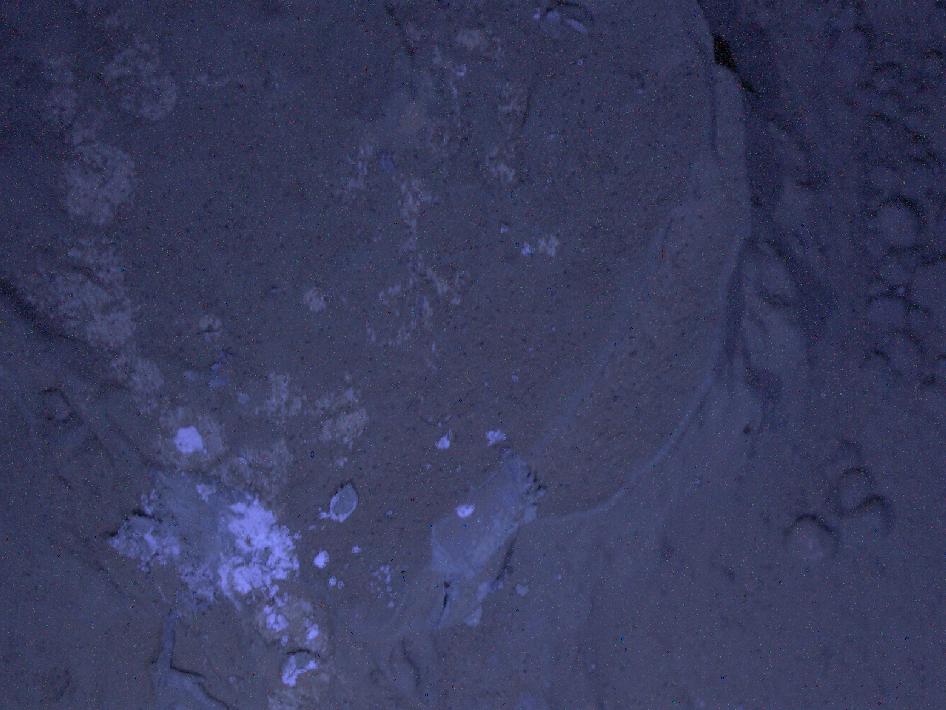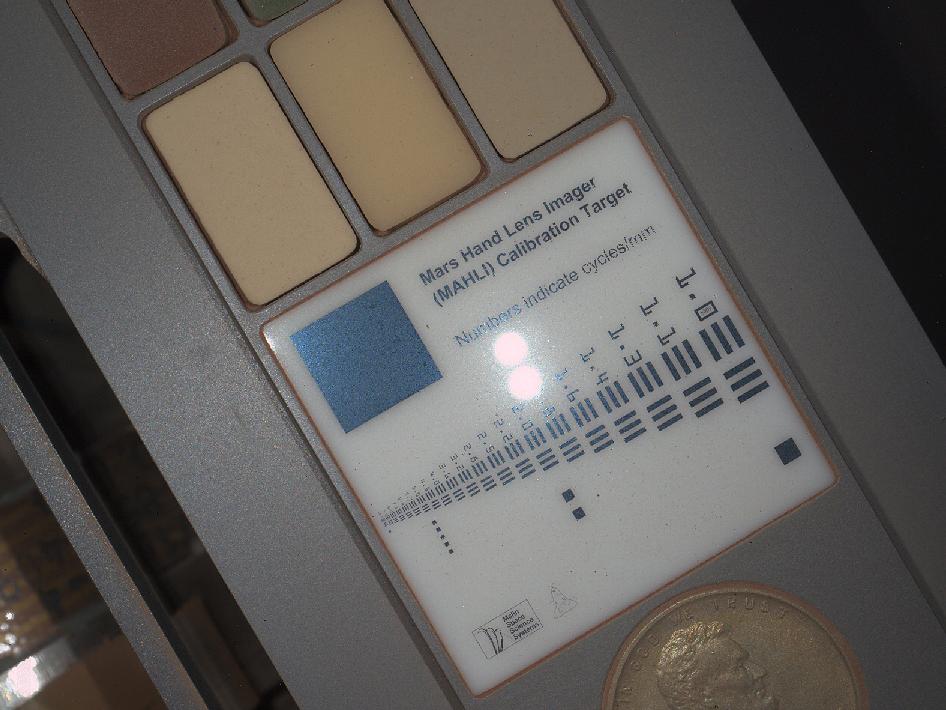Curiosity night shift
Since last week, the well-known rover Curiosity began working on the night shift. On January 22, on one of the Martian nights, he used one of his seventeen cameras ( MAHLI ) using ultraviolet radiation to study the Sayunei hill in the recess of Yellowknife Bay (where he has been since December 2012) in the Crater Gale area . This study is the main part of the two-year mission of the rover on the red planet, where life may have existed or still exists. Sayunei is one of the sites where Jet Propulsion Laboratory (JPL) is going to start drilling the next Martian rock for the next few weeks. In this area of Mars, one of the “hands” with white and ultraviolet LED lights was used for the first time. Images from this area of the planet were taken on Earth on January 23.
One of the first frames of the Martian breed from the MAHLI camera after dark at its 165th salt on the planet in white light LED backlight, the image covers an area of 3.4 by 2.5 centimeters. Lighting comes from one pair of LED sources. This made it possible to make clearer surface shadows and texturing of details (full-size images are available by clicking) :

Frame with MAHLI in ultraviolet:

')
According to MSSS principal investigator Ken Edgett:
NASA's Mars Science Laboratory uses Curiosity to research Crater Gale for favorable conditions for the life of microorganisms. More complete information on the research project is available on the following resources: nasa.gov/msl and mars.jpl.nasa.gov/msl .
According to information from NASA
One of the first frames of the Martian breed from the MAHLI camera after dark at its 165th salt on the planet in white light LED backlight, the image covers an area of 3.4 by 2.5 centimeters. Lighting comes from one pair of LED sources. This made it possible to make clearer surface shadows and texturing of details (full-size images are available by clicking) :

Frame with MAHLI in ultraviolet:

')
According to MSSS principal investigator Ken Edgett:
The purpose of these observations in ultraviolet light was the search for luminescent rocks. The data just arrived this morning and our scientific team is still analyzing the information received. If something looked green, yellow, orange, or red, this would be a clear sign of fluorescence.
NASA's Mars Science Laboratory uses Curiosity to research Crater Gale for favorable conditions for the life of microorganisms. More complete information on the research project is available on the following resources: nasa.gov/msl and mars.jpl.nasa.gov/msl .
According to information from NASA
Source: https://habr.com/ru/post/167231/
All Articles

